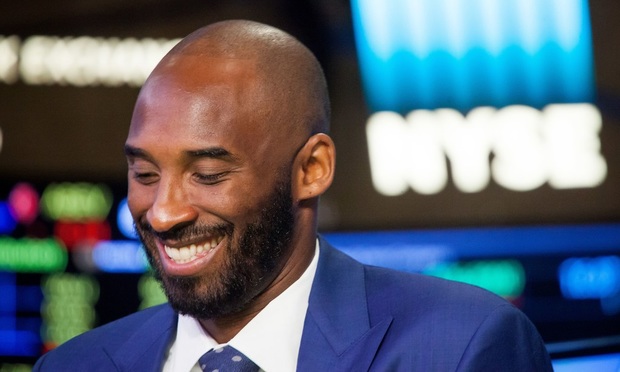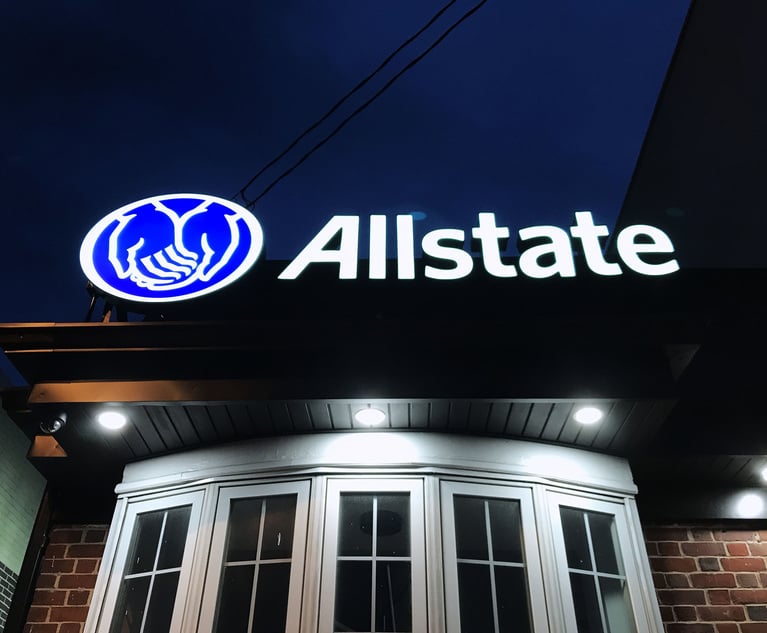In Kobe Bryant Crash, Could a Lawsuit Be Coming?
Former U.S. Department of Transportation Inspector General Mary Schiavo, a partner at Motley Rice, said that lawyers would be looking at multiple facts, including the conversation between the air traffic control and the pilot just before Sunday's crash, which killed the LA Lakers star and eight others. "Those next sentences could be billion dollar words," Shiavo said.
January 27, 2020 at 05:32 PM
5 minute read
 Kobe Bryant speaks during a TV interview after unveiling his venture-capital fund Bryant Stibel on Aug, 22, 2016. Photo: Michael Nagle/Bloomberg
Kobe Bryant speaks during a TV interview after unveiling his venture-capital fund Bryant Stibel on Aug, 22, 2016. Photo: Michael Nagle/Bloomberg
The cause of the helicopter crash that killed retired Los Angeles Lakers basketball player Kobe Bryant, his 13-year-old daughter and seven other people, remains unknown. The National Transportation Safety Board is investigating the crash, which occurred on a foggy Sunday morning in Los Angeles.
Could there be a lawsuit?
The Recorder talked to former U.S. Department of Transportation Inspector General Mary Schiavo, a partner at Motley Rice, whose firm brought a lawsuit over a crash of the U.S. Army's Black Hawk helicopter, a Sikorsky similar to the one that was taking Bryant and the other passengers to his daughter's basketball game.
Schiavo told me what lawyers were watching.
This article has been edited for length and brevity.
What can you tell us about this helicopter?
This one was a 1991 helicopter, so it's got some years on it. To me, it was interesting it was circling downtown Los Angeles at a very low altitude. To me that says fog, or some kind of problem. Then they headed to Calabasas. Then they turned left and headed to a wooded non-populated area. Those might suggest you're having mechanical [problems], or they were desperately trying to get out of the fog.
When you look at maintenance records, what it was used for in the meantime, what was the reason they went "visual flight rules," instead of IFR [instrument flight rules]? In the Black Hawk Sikorsky case, there were everything from problems with the rotor, the rotor pitch failed, one problem was the seat came loose.
What about the pilot?
It's looking bad at this point for the piloting, but we don't know yet. But taking off in limited visibility on a visual flight rule plan, that call will be questioned by the NTSB. Why didn't they go instrument flight rules, which means air traffic control? So here, the second avenue of examination will be the pilot's performance and whether this is pilot error, which brings us to the third thing lawyers will look at: What is this holding company?
Which holding company?
This aircraft was titled, owned, by a company called Island Express. Island Express is south of Los Angeles, Orange County, and runs visual tours, air tours. They take people out over Catalina Island. And they have a few dozen employees, and they were looking for more employees when this happened, and they took their website down.
They have a number of pilots and do tours. So the media reports that this was Kobe Bryant's helicopter, but the registration does not say that. It says it belongs to Island Express. That will bring us into the legal conundrum of:
- Were the pilots also Island Express pilots?
- What kind of coverage does Island Express have? and
- Were there any special circumstances? Did Kobe or anyone on that plane put pressures on the pilot?
They'll be looking at what kind of flight control Island Express had on this flight. It looks like they owned it, it looks like it's their pilot, so why weren't they more careful? Does Mr. Bryant's estate have any financial interest in this Island Express, or did he turn over ownership of his helicopter to maintain it?
What do you make of the air traffic controller's conversation with the pilot?
I've only heard snippets of air traffic control. The U.S. government runs air traffic controls. They said they were going to follow the aircraft on radar. But then they said, "No, you're way too low." They said, "We can't climb any higher because we're in the clouds." They were really low for LA. That's a little surprising. So they said, "We can't provide you flight forwarding anymore. We can't watch you on radar, you're too low." What we need to hear is the next few sentences. What came next? Did they give them any more instruction?
Why is that?
That's really important, because it is possible air traffic control made a mistake. If that's the case, the U.S. of America foots the bill. … We don't know what the FAA told them next. If they said climb to 2,000 feet and turn left, and there was a mountain in their path, the government is liable. If the next thing is you are not legal, you are in the clouds, you are flying VFR without visual reference, you have to get out of there, you are flying illegally, it's on the pilot. Those next sentences could be billion dollar words.
Is there any circumstance here in which there might not be a lawsuit?
I don't see it.
This content has been archived. It is available through our partners, LexisNexis® and Bloomberg Law.
To view this content, please continue to their sites.
Not a Lexis Subscriber?
Subscribe Now
Not a Bloomberg Law Subscriber?
Subscribe Now
NOT FOR REPRINT
© 2025 ALM Global, LLC, All Rights Reserved. Request academic re-use from www.copyright.com. All other uses, submit a request to [email protected]. For more information visit Asset & Logo Licensing.
You Might Like
View All
State Appeals Court Revives BraunHagey Lawsuit Alleging $4.2M Unlawful Wire to China
3 minute read

Apple Disputes 'Efforts to Manufacture' Imaging Sensor Claims Against iPhone 15 Technology

Lawsuit alleges racial and gender discrimination led to an Air Force contractor's death at California airfield
7 minute readTrending Stories
- 1'Astronomical' Interest Rates: $1B Settlement to Resolve Allegations of 'Predatory' Lending Cancels $534M in Small-Business Debts
- 2Senator Plans to Reintroduce Bill to Split 9th Circuit
- 3Law Firms Converge to Defend HIPAA Regulation
- 4Judge Denies Retrial Bid by Ex-U.S. Sen. Menendez Over Evidentiary Error
- 5Lawyers: Meet Your New Partner
Who Got The Work
J. Brugh Lower of Gibbons has entered an appearance for industrial equipment supplier Devco Corporation in a pending trademark infringement lawsuit. The suit, accusing the defendant of selling knock-off Graco products, was filed Dec. 18 in New Jersey District Court by Rivkin Radler on behalf of Graco Inc. and Graco Minnesota. The case, assigned to U.S. District Judge Zahid N. Quraishi, is 3:24-cv-11294, Graco Inc. et al v. Devco Corporation.
Who Got The Work
Rebecca Maller-Stein and Kent A. Yalowitz of Arnold & Porter Kaye Scholer have entered their appearances for Hanaco Venture Capital and its executives, Lior Prosor and David Frankel, in a pending securities lawsuit. The action, filed on Dec. 24 in New York Southern District Court by Zell, Aron & Co. on behalf of Goldeneye Advisors, accuses the defendants of negligently and fraudulently managing the plaintiff's $1 million investment. The case, assigned to U.S. District Judge Vernon S. Broderick, is 1:24-cv-09918, Goldeneye Advisors, LLC v. Hanaco Venture Capital, Ltd. et al.
Who Got The Work
Attorneys from A&O Shearman has stepped in as defense counsel for Toronto-Dominion Bank and other defendants in a pending securities class action. The suit, filed Dec. 11 in New York Southern District Court by Bleichmar Fonti & Auld, accuses the defendants of concealing the bank's 'pervasive' deficiencies in regards to its compliance with the Bank Secrecy Act and the quality of its anti-money laundering controls. The case, assigned to U.S. District Judge Arun Subramanian, is 1:24-cv-09445, Gonzalez v. The Toronto-Dominion Bank et al.
Who Got The Work
Crown Castle International, a Pennsylvania company providing shared communications infrastructure, has turned to Luke D. Wolf of Gordon Rees Scully Mansukhani to fend off a pending breach-of-contract lawsuit. The court action, filed Nov. 25 in Michigan Eastern District Court by Hooper Hathaway PC on behalf of The Town Residences LLC, accuses Crown Castle of failing to transfer approximately $30,000 in utility payments from T-Mobile in breach of a roof-top lease and assignment agreement. The case, assigned to U.S. District Judge Susan K. Declercq, is 2:24-cv-13131, The Town Residences LLC v. T-Mobile US, Inc. et al.
Who Got The Work
Wilfred P. Coronato and Daniel M. Schwartz of McCarter & English have stepped in as defense counsel to Electrolux Home Products Inc. in a pending product liability lawsuit. The court action, filed Nov. 26 in New York Eastern District Court by Poulos Lopiccolo PC and Nagel Rice LLP on behalf of David Stern, alleges that the defendant's refrigerators’ drawers and shelving repeatedly break and fall apart within months after purchase. The case, assigned to U.S. District Judge Joan M. Azrack, is 2:24-cv-08204, Stern v. Electrolux Home Products, Inc.
Featured Firms
Law Offices of Gary Martin Hays & Associates, P.C.
(470) 294-1674
Law Offices of Mark E. Salomone
(857) 444-6468
Smith & Hassler
(713) 739-1250






